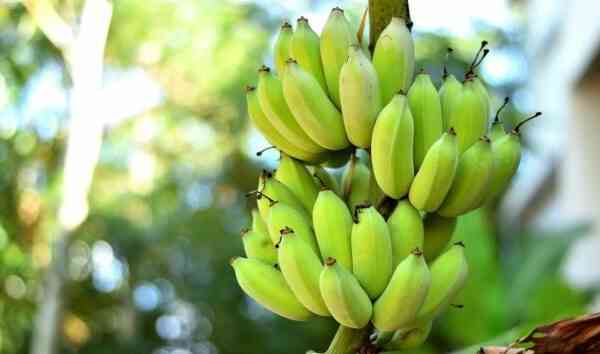It is probably hard to find a person on Earth who has not had a chance to try bananas. Once upon a time they were exotic from distant lands, but now they can be bought in stores almost anywhere, even in cities farthest from the equator. And in most cases they are very inexpensive, which is also pleasing. Well, in those countries where bananas grow, they often occupy an important place in local cuisine and culinary traditions – they are eaten just like that, and fried, boiled, and even baked from them.
Interesting facts about bananas
- The banana palm is a grass, not a tree, and the banana itself is not a fruit, but a berry.
- The stalk of banana grass sometimes reaches 10 meters in height and 40 centimeters in diameter. On one such stem grows up to 300 fruits with a total weight of up to 500 kg.
- Bananas are not only yellow, but also red. Reds have more tender flesh, and they cannot stand transportation, so they are not on store shelves.
- Almost all varieties of bananas are radioactive, because. contain potassium and its isotope potassium-40. Even there is such a thing – “banana equivalent”.
- Bananas contain more vitamin B6 than any other fruit. Yes, this is, of course, a berry, but everyone is still used to considering them fruits.
- Bananas retain calcium in the body, it is not excreted in the urine, but remains in the body and is used to strengthen bones.
- Bananas ripen 3 times a year if the climate allows.
- Bananas are in second place by weight of the annual harvest worldwide, losing the palm to oranges, which are grown even more.
- India occupies the first place in the world in the production of bananas (interesting facts about India).
- The first written sources mentioning bananas as an edible plant were written a little less than three thousand years ago.
- Bananas are almost one and a half times more nutritious than potatoes, and dried bananas have five times more calories than raw ones.
- Bananas are always picked unripe. And not at all because they can deteriorate on the road – a banana can simply become tasty and healthy only if it ripens under artificial conditions.
- Mait Lepik from Estonia won the world’s first banana-eating speed competition. He managed to eat 10 bananas in 3 minutes. His secret was eating the bananas with the peel on, saving time (interesting facts about Estonia).
- More than 100 billion bananas are eaten every year in the world.
- Approximately 95% of all banana bushes where fruits are grown originated from a single bush in South Asia.
- One predatory animal quite calmly eats bananas without experiencing any health problems – the maned wolf.
- Now there are over 40 edible types of bananas, growing mainly in the tropics and subtropics of Asia, Australia and South America (interesting facts about South America).
- Ecuador supplies the most bananas to other countries. Most likely those bananas that you buy are grown in this country.
- In his Natural History, written almost 2000 years ago, the Roman writer Pliny the Elder mentions that during his campaign in India in 327 BC. e. Alexander the Great tried this fruit and even brought it to Europe with him.
- Bananas sold in our stores, bred artificially, therefore they are very sensitive to climate and pests, but they tolerate transportation better and are stored longer.
- In Uganda and Burundi, where the locals live almost exclusively on bananas, each person eats an average of 200-220 kilograms of bananas per year.
- Today, about a thousand types of bananas are known, but the vast majority of them are not suitable for food.
- Bananas ripen for a very long time – from ten to eighteen months, depending on the variety.
- Some scientists believe that bananas were also known in South America before the arrival of Europeans. The remains of banana leaves were found in Peruvian Indian tombs (interesting facts about Peru).
- Bananas are even used to make products such as flour and ketchup.
- The once most popular varieties of bananas almost died out in 20 -th century due to the spread of diseases that affect these plants.
- For the first time in botany, the banana was described by Carl Linnaeus in 1753.
- Bananas are raw materials for cosmetic products. It is with their use that excellent masks, creams and lotions are obtained.
- Ship gear is made from the trunks and leaves of technical varieties of bananas. They are strong and last for decades.
- At room temperature, bananas last longer than in the refrigerator.
- The high content of potassium in banana pulp saves those who exercise a lot from cramps in the calf muscles.
